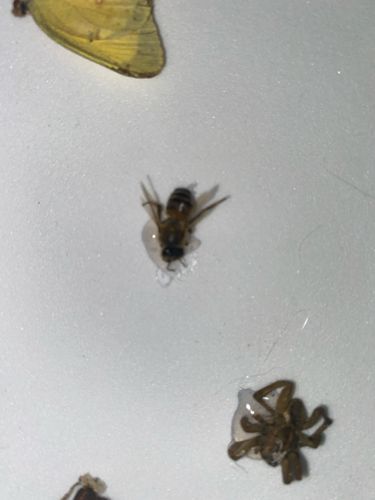Honey Bee
Scientific Name: Apis mellifera
Order & Family: Hymenoptera, Apidae
Size: 10-20 mm (0.4-0.8 inches)

Natural Habitat
Widely distributed globally, found in diverse habitats including forests, grasslands, gardens, and urban areas, typically near flowering plants and often in man-made hives or natural cavities.
Diet & Feeding
Nectar (for carbohydrates/energy) and pollen (for protein/nutrients) from a wide variety of flowering plants.
Behavior Patterns
Social insects living in large colonies with a queen, drones, and worker bees. They forage for nectar and pollen, build intricate honeycombs, produce honey and beeswax, and communicate through complex dances (e.g., waggle dance) to indicate food sources. They are known for their organized hive hierarchy and cooperative behaviors.
Risks & Benefits
Benefits: Essential pollinators for many crops and wild plants, contributing significantly to biodiversity and food production. Produce honey, beeswax, propolis, and royal jelly, which have economic and medicinal value. Risks: Can sting when threatened, which can be painful and dangerous for individuals allergic to bee venom. While generally docile when foraging, a disturbed hive can be aggressive.
Identified on: 9/17/2025